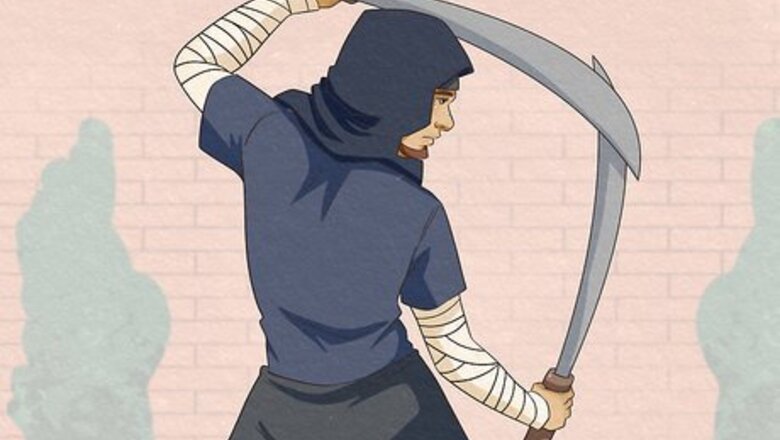
views
- Dual-wielding is a combat mechanic that lets your PC use their bonus action to make an extra attack on an enemy, so long as they’re wielding light weapons.
- Any character can fight with two weapons in D&D 5e, regardless of class—but your PC can’t dual-wield heavy, two-handed weapons or shields.
- The Dual Wielder feat is an optional perk that lets PCs dual-wield without light weapons while giving them a +1 bonus to their armor class.
What is dual wielding in D&D 5e?
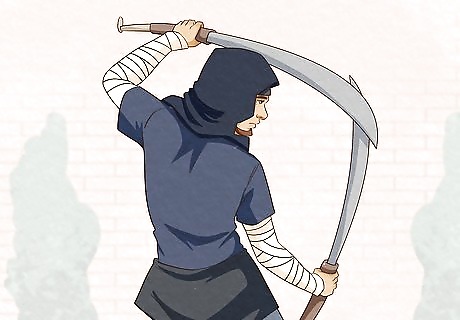
Dual wielding is a combat mechanic that lets PCs attack with two weapons. It involves giving your player character (PC) two weapons—one in their main hand and the other in their off-hand. While dual-wielding, you can use an action to attack with the weapon in your PC’s main hand and a bonus action to attack with the weapon in your PC’s off-hand. However, this fighting style is only allowed when your PC’s weapons are classified as “light.” “Dual wielding” isn’t the official term for equipping your PC with a main and off-hand weapon in D&D. It’s actually called “Two-weapon fighting.” There’s one main drawback to dual wielding: when you make a bonus action attack with your PC’s off-hand weapon, you can’t add their ability modifier to the total damage. Ability modifiers are values based on your PC’s ability scores, and they’re usually added to attack rolls to supplement damage rolls. Off-hand attacks only incorporate whatever damage you roll on your dice.
Who can use dual wielding?
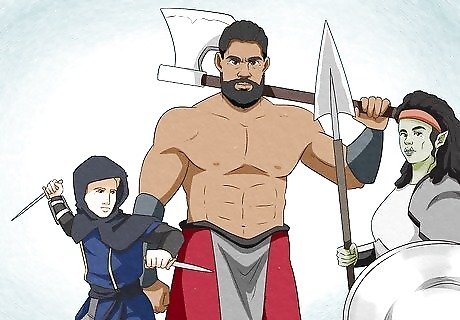
Any character can fight with two weapons according to the 5e rules. There are absolutely no class restrictions when it comes to dual wielding in D&D 5e. So long as your PC is wielding light one-handed melee weapons in each hand, they’re following the rules of two-weapon fighting (as written in the Player’s Handbook), meaning they’re free to be dual-wielding combatants. One-handed weapons include longswords, rapiers, battleaxes, maces, flails, morningstars, war picks, and warhammers. Light weapons include daggers, scimitars, shortswords, clubs, handaxes, light hammers, and sickles. Remember, you can’t use heavy, two-handed weapons (including greatswords, greataxes, glaives, mauls, or halberds) while dual-wielding. Dual wielding also doesn’t work with ranged weapons, including hand crossbows. It’s specific to melee weapons only.
Who benefits from dual wielding?
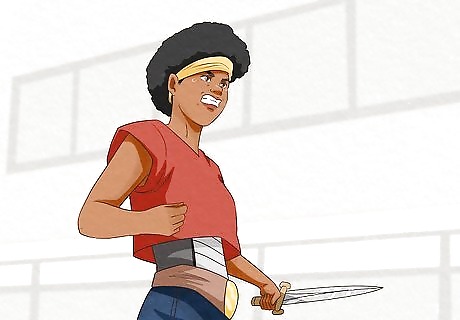
Low-level martial PCs can take advantage of two-weapon fighting. Martial classes (like fighters, rangers, and paladins) get the Extra Attack feature as they gain levels, enabling them to take an additional attack per action without dual wielding. However, while they’re still low-level, those classes don’t have this feature—and they can make up for it by dual-wielding, at least until they get their Extra Attack feature. Frontline melee combatants generally don’t have a ton of secondary spells or features to use on bonus actions—so if you find yourself always ending your PC’s turn without using their bonus action, consider two-weapon fighting. Dual Wielding ensures your martial character gets to take a second attack on their turn (and deal extra damage). If high damage output is your goal, two-weapon fighting might be ideal at low levels. Remember, dual wielding limits your weapon choices a little. You can’t equip a shield or give your PC a two-handed weapon (like a greatsword or greatclub).

Rogues especially benefit from two-weapon fighting. Even though rogues are primarily a martial class, they never get the Extra Attack feature (unless you multiclass your rogue character into some other class with that feature). So, turning your rogue PC into a two-weapon fighter gives them the ability to attack twice per turn—and a higher chance of Sneak Attacking enemies successfully. Keep in mind, however, that rogues do get other bonus action abilities that may be useful, like Fast Hands or Cunning Action. In other words, you probably won’t always use your rogue’s bonus action to attack—but it’s certainly a convenient option to have at the ready!
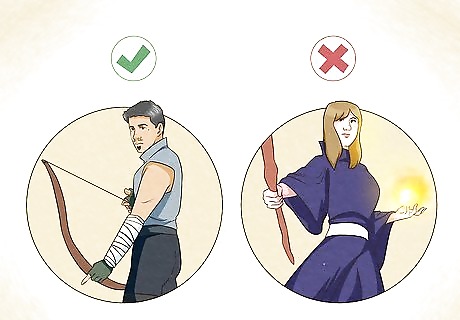
Ultimately, your PC’s combat techniques are a matter of personal taste. Two-weapon fighting isn’t necessarily better than other combat mechanics, so it usually comes down to the character you want to portray. Are you dying to play a swashbuckling rogue character with a rapier in each hand? Then go for it! If your goal for your character build involves specializing in dual wielding, you can certainly do so. Generally, classes emphasizing melee combat with physical weapons (not spells) tend to work best with two-weapon fighting—fighters, rogues, rangers, paladins, and barbarians. Conversely, two-weapon fighting might not work well for certain classes. For example, clerics, wizards, warlocks, sorcerers, and druids all need a free hand to cast spells—so giving them a second weapon might be pointless.
How to Improve Dual Wielding

Ability score improvement The easiest way to improve your PC’s dual-wielding skills is to raise their ability scores—specifically, whichever ability score they rely on in combat. If your PC is strong and fights using brute force, that means improving their Strength score. If your PC mainly uses finesse weapons, fighting with precision and agility, that means improving their Dexterity score. As your PC’s ability score increases, so will their damage output (and ability to reliably hit enemies). To raise your PC’s ability scores: Level up. Periodically, leveling up your PC will also allow you to boost their ability scores—so take the opportunity to give your PC a permanent Strength or Dexterity bonus. Take a feat. Feats are optional abilities and perks that become available while leveling up, and certain feats can increase your PC’s stats. For example, the Athlete feat comes with a +1 bonus to Strength or Dexterity. Find magic items. It’s common to loot magic items while adventuring in D&D 5e, so keep an eye out for anything designed to boost your PC’s stats. For example, the Ioun Stone of Agility gives a +2 Dexterity bonus, while a Belt of Giant Strength can set your PC’s Strength score above 20.
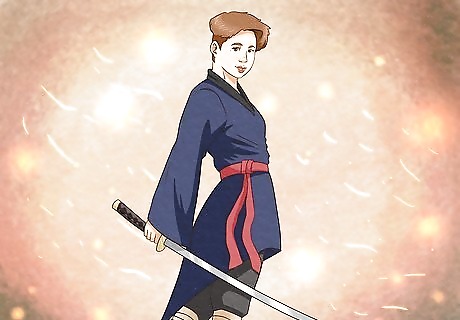
Fighting Style: Two-Weapon Fighting In D&D 5e, fighters and rangers can also adopt a Fighting Style called “Two-Weapon Fighting,” which allows them to hone their dual-wielding skills. If your PC has the Two-Weapon Fighting style, you can add their ability modifier to the total damage from their off-hand weapon attacks (which you can’t normally do while dual-wielding). Though it might sound confusing, two-weapon fighting and the Two-Weapon Fighting style are different! Any PC can do two-weapon fighting (a basic game mechanic) regardless of class. However, the Two-Weapon Fighting style is specific to fighters and rangers. It comes with perks that improve basic dual-wielding. Fighters get to choose a Fighting Style at level 1, while rangers get to choose at level 2. If your PC is a fighter or ranger and you want them to be a dual wielder, Two-Weapon Fighting is a valuable skill choice because it gives offhand attacks the same power and damage output as main hand attacks.

Dual Wielder feat The Dual Wielder feat is available to any class in D&D 5e; it’s designed to boost your PC’s offensive and defensive capabilities while wielding two weapons simultaneously. Overall, the Dual Wielder feat is pretty solid if you’re set on making your PC a two-weapon fighter since it also gives your PC the ability to wield a wider variety of weapons in both hands. The Dual Wielder feat’s properties include: Your PC masters the art of fighting with two weapons, gaining a +1 bonus to their armor class while wielding a separate melee weapon in each hand. Your PC can use two-weapon fighting even if the melee weapons in their hands aren’t considered light. Your PC can draw or stow two one-handed melee weapons when they’d usually only be able to draw or stow a single weapon. However, this feat doesn’t let you add your PC’s ability modifier to their offhand attack damage; you’ll still need the Two-Weapon Fighting style for that.
Do you need the Dual Wielder feat?
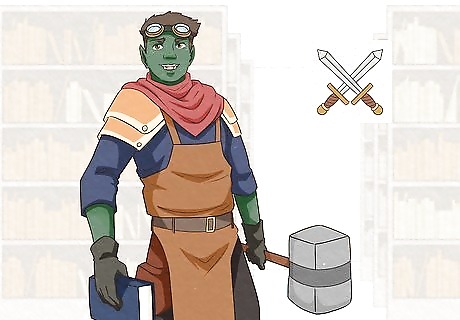
The Dual Wielder feat is helpful but not essential for a dual-wielding PC. Ultimately, there are plenty of other ways to boost your PC’s dual-wielding ability if you want them to have two weapons, from simply increasing their ability score (and modifier) to finding stronger, magical weapons that boost their damage output. Nonetheless, it’s not a bad feat—and if you want to play a true dual-wielding master (with a decent bonus to their armor class and a better array of weapons), the Dual Wielder feat is a valid choice for your PC. Try building up your PC’s Strength or Dexterity ability score as much as possible (up to 20) before taking the Dual Wielder feat. A high ability score is still more beneficial than the feat alone! Dual-wielding can also interfere with classes that have a lot of viable bonus actions (like rogues and bards), so it might not be a good idea to invest in the Dual Wielder feat if you won't use dual-wielding very often.
Best Weapons to Use With the Dual Wielder Feat
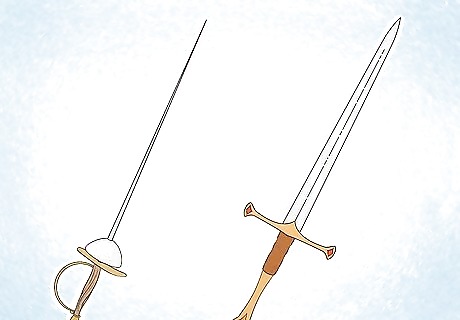
Longswords and rapiers are the best Dual Wielder weapons. Every weapon used when dual wielding has to be one-handed, and each weapon in D&D 5e is linked to a specific damage dice (which you roll to determine how much damage an attack deals). Since the greatest damage you can deal with one-handed weapons is a d8, that makes longswords and rapiers (which both deal 1d8 damage) the best choice. Longswords work best for Strength-based character builds (meaning your PC’s Strength ability score is the stat they use to empower their weapon attacks). Rapiers work best for Dextierty-based character builds (meaning your PC’s Dexterity ability score empowers their weapon attacks). Keep in mind that longswords and rapiers aren’t light—so you can’t equip them in your PC’s off-hand unless you have the Dual Wielder feat!
Which classes can use the Dual Wielder feat?
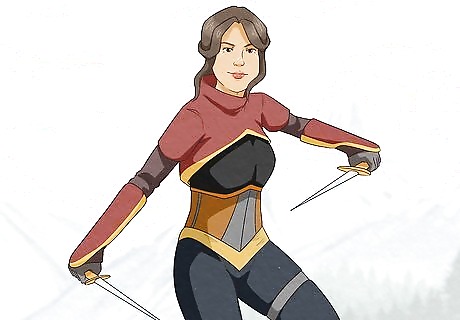
Rogues Rogues are sneaky combatants who operate with care and precision. The rogue’s fighting style is all about dealing a single, devastating blow with Sneak Attack—but dual-wielding can give your rogue PC a second chance to score that attack if their first attempt misses. If their first attack hits, you can skip the second attack and use your bonus action to Hide or Disengage instead. In short, dual-wielding (and the Dual Wielder feat) is a solid safety net for rogues. Since rogues are proficient with shields, the Dual Wielder feat is also an excellent way to boost your PC’s armor class.

Barbarians Barbarians are primal warriors who rely on their strength and hardiness to dominate the battlefield. If your barbarian PC isn’t using a two-handed weapon, the Dual Wielder feat can be surprisingly valuable! Try dual-wielding while your barbarian is Raging; because the Rage feature comes with a damage bonus, their off-hand attacks will also get that bonus. Barbarians also rarely wear armor, so an extra +1 to their armor class from the Dual Wielder feat can undoubtedly strengthen their defenses.
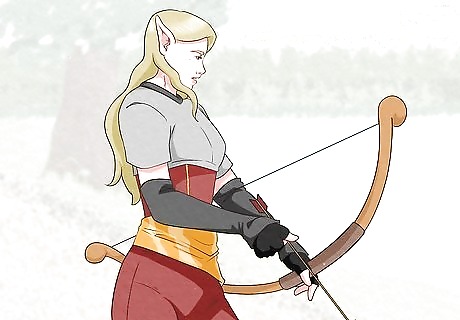
Rangers If you’re playing a dual-wielding ranger character and want to take the Dual Wielder feat, make sure you choose the Two-Weapon Fighting style for them as well. Between the Fighting Style and the feat, a dual-wielding ranger can be pretty effective on the battlefield! Rangers eventually get the Extra Attack feature, giving them 2 attacks per action—but while dual-wielding, that means they’ll get 3 attacks per turn total, thus increasing their damage output. Remember, rangers have access to spells (including Hunter’s Mark) that take a bonus action to cast, so the Dual Wielder feat might not be useful on every single turn in combat.
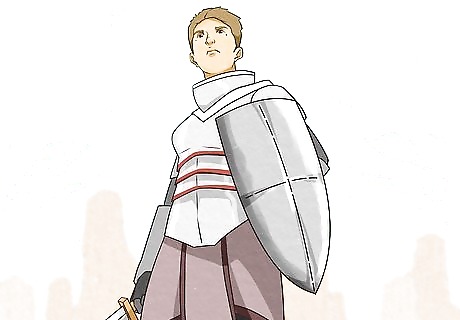
Fighters The Dual Wielder feat is excellent if you’re playing a dual-wielding fighter build. However, the dual-wielding build is suboptimal compared to others (like a two-handed weapon build)—so if optimization is your goal, the Dual Wielder feat might not be your top choice. Nonetheless, a Dexterity-based fighter can do a lot with the Dual Wielder feat—especially since other fighter feats like Great Weapon Master and Sentinel won’t be as helpful for them.
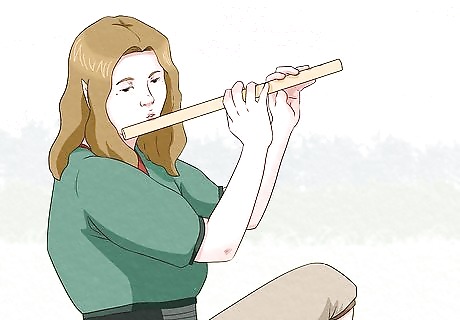
Bards Dual Wielder isn’t a good feat for most bards, who channel magic through the power of song and speech. However, the Dual Wielder feat might work if you play a combat-oriented subclass like College of Swords or Valor. Both subclasses get the Extra Attack feature—and when you combine that with an offhand attack from dual-wielding, that’s 3 attacks per turn. Still, bards are spellcasters first and foremost and have plenty of spells requiring a bonus action to cast—not to mention their Bardic Inspiration feature, which takes a bonus action to use. Think it over before taking Dual Wielder for your bard PC; it’s worthwhile if you dual-wield often, but definitely not worth it if you’re more focused on using spells and class features.

Paladins Paladins get the Extra Attack feature at level 5—so after that, dual-wielding (with the Dual Wielder feat) will give your paladin PC 3 attacks per turn, which can boost their damage output. Dual Wielder is especially helpful if you want as many chances as possible to use your paladin’s Divine Smite feature (which deals extra damage but only takes effect when you successfully hit a creature with your attack). Remember that other feats, including Great Weapon Master and Sentinel, can be even more helpful for a Strength-based paladin build—so it might be wiser to prioritize them over the Dual Wielder feat.
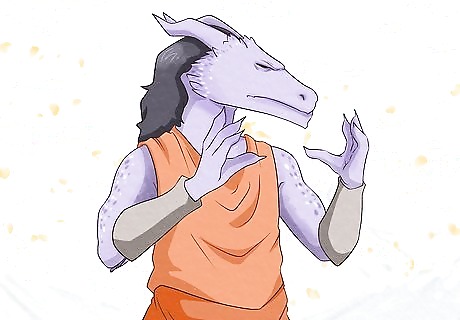
Monks Dual Wielder (and the dual-wielding combat mechanic in general) isn’t beneficial for a monk. Monks are martial artists capable of dealing damage with their fists alone—and they tend to make unarmed strikes more often than weapon attacks. Thus, Dual Wielder (which applies to weapon attacks only) won’t really do anything for your monk PC.

Spellcasters Most spellcasting classes in D&D 5e—including artificers, clerics, druids, sorcerers, wizards, and warlocks—won’t get anything out of the Dual Wielder feat (or the dual-wielding combat mechanic). Sorcerers, artificers, druids, wizards, and warlocks all need their hands free to cast spells. Clerics are also primarily spellcasters, and although they’re typically more heavily armed and armored than the others, Dual Wielder still isn’t the best feat for them. The combat-oriented War Domain cleric subclass might use weapons often enough for you to consider the Dual Wieder feat, but even then, there are likely better feats for your PC (like War Caster or Resilient).












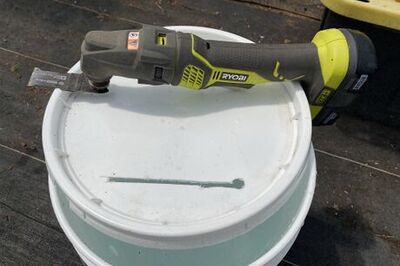


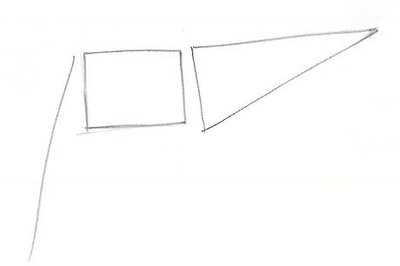
Comments
0 comment